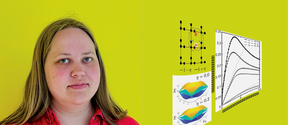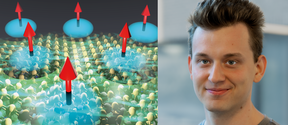Everyday choices: Eliisa Lotsari, do you ever go ice swimming?

Your area of research is the impact of climate change on water systems, and you specialise in the cold waters of Finland's north. Which ones?
The most important water systems I study in the far north are the Tenojoki and Pulmankijoki rivers. Further south, I’ve been working at Oulankajoki, Kokemäenjoki and even Vantaanjoki. There’s also Hiitolanjoki in South Karelia and Koitajoki in North Karelia. These represent different hydrological conditions in Finland.
Is there a body of water that you’re particularly fond of?
Water systems have always been a presence in my life. I spent my childhood on a farm in Pukkila, southern Finland, and I liked to keep watch on the nearby tributary of Porvoojoki river – checking whether the fields collapsed in the spring floods. So I started observing nature and the environment almost by chance.
I ended up studying physical geography at the University of Turku, and my MSc research took me to northern Finland. But it was while doing my PhD that I was struck by how little was known about water systems in winter – for example, what happens to sediment transport when a river freezes? Such issues hadn’t been considered in modelling the impact of climate change, because there was hardly any data.
The northern regions of the planet are expected to heat up fastest. What kinds of changes can we expect in the water systems?
The importance of increased winter and autumn rainfall has already been recognised, and the timing of floods is likely to change. For example, it’s been predicted that winter or autumn floods will become more common in southern regions.
When temperatures hover around zero, supercooled water creates frazil ice in rivers, which can lead to ice dams and winter floods. Frazil ice is slush formed by small ice crystals stuck together.
In the absence of a protective ice cover, the changes will also affect sediment transport and river erosion.
But there’s always some variation between years, so we need a long series of observations to draw conclusions. Only then will we be able to say what is a consequence of climate change and what is a result of other human activities, such as changes in land use.
Your research team performs a lot of aerial and underwater photography. Has anything particularly surprising shown up in the pictures?
We make sure no people or extra material is captured in the aerial images. You do sometimes see elks, reindeer or even a fox. And it was great to see a salmon in the underwater photos.
But the most impressive thing was when we happened to schedule an autumn shoot at the very moment frazil ice was forming. We were able to see how the ice started to form at the bottom of the river. It’s rare to be able to observe and measure a phenomenon in that brief moment.
Do you like to go ice swimming?
Before Aalto, I worked at the University of Eastern Finland in Joensuu, where they have one of the largest ice-swimming clubs in Finland. I used to frequent their sauna in the winter quite often. And I do like swimming – I always carry my swimsuit with me.
Text: Paula Haikarainen
Photo: Nita Vera
This article has been published in the Aalto University Magazine issue 31 (issuu.com), October 2022.
Water researcher Eliisa Lotsari receives the Academy of Finland Award 2021
Lotsari was awarded for an excellent multidisciplinary approach to understanding changes in water systems.

- Published:
- Updated:
Read more news

A peek into research on electrospinning of Functional Polysaccharide Derivatives
We had the honour of hosting a guest speaker, researcher Issei Otsuka, from the University of Grenoble Alpes at our ‘Coffee and Science’ event. Dr. Otsuka is visiting Finland on Researcher Short Mobility program which is aimed for the establishment of scientific partnerships between France and Finland.
"Keep an open mind and step outside of your comfort zone"
Read what double award winner Kukka-Emilia Huhtinen wants to share about her doctoral studies in theoretical physics
"My PhD was great from every single point of view"
Read how Viliam Vaňo, Aalto thesis award winner, experienced his doctoral studies